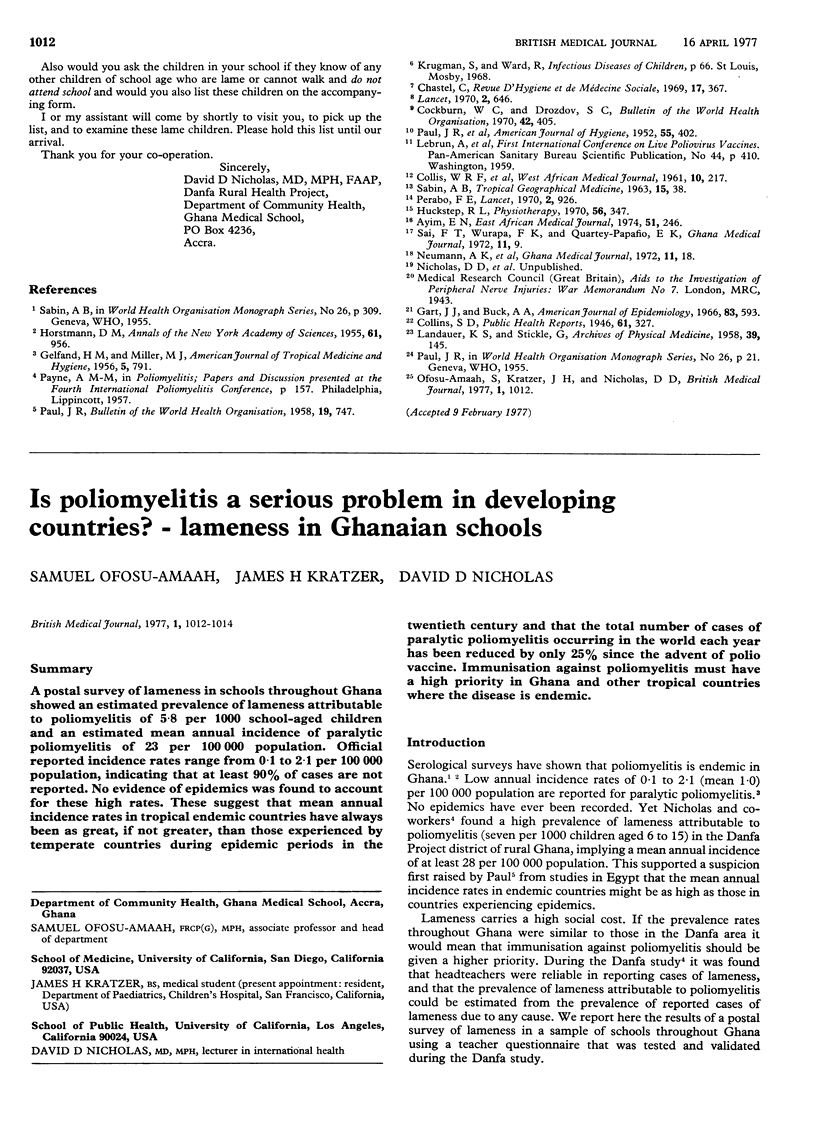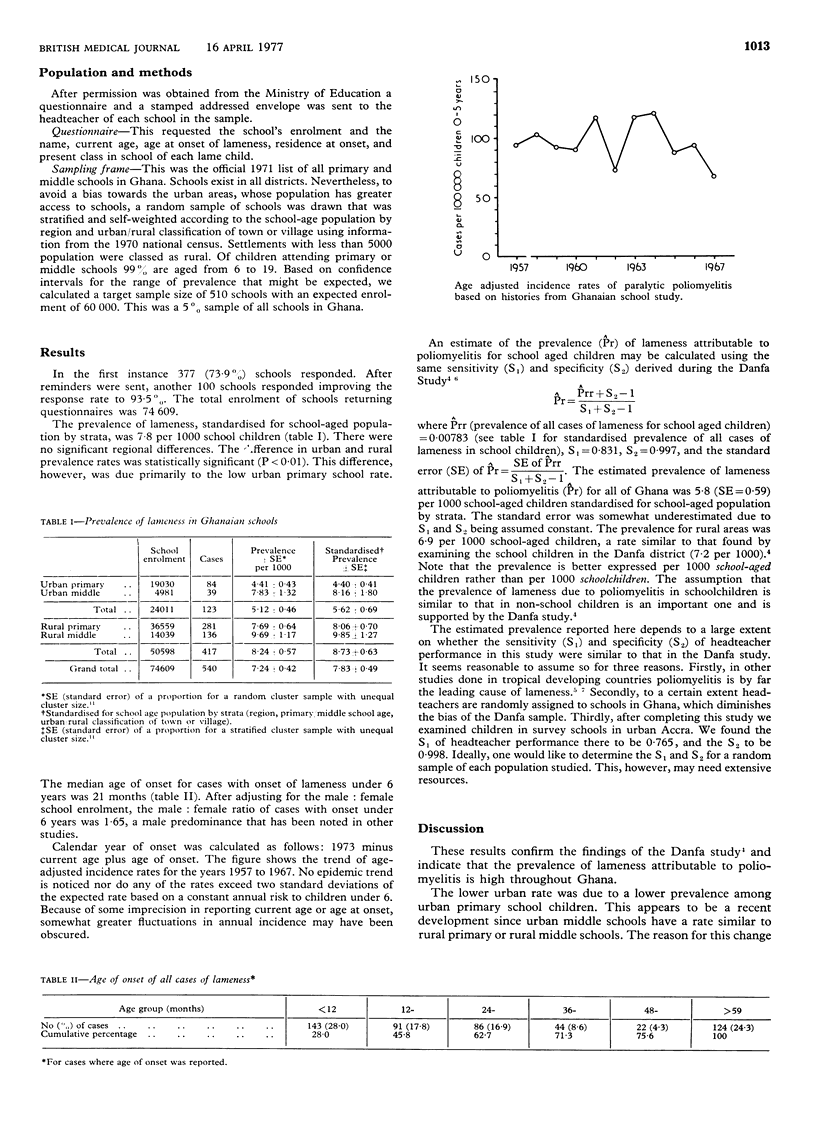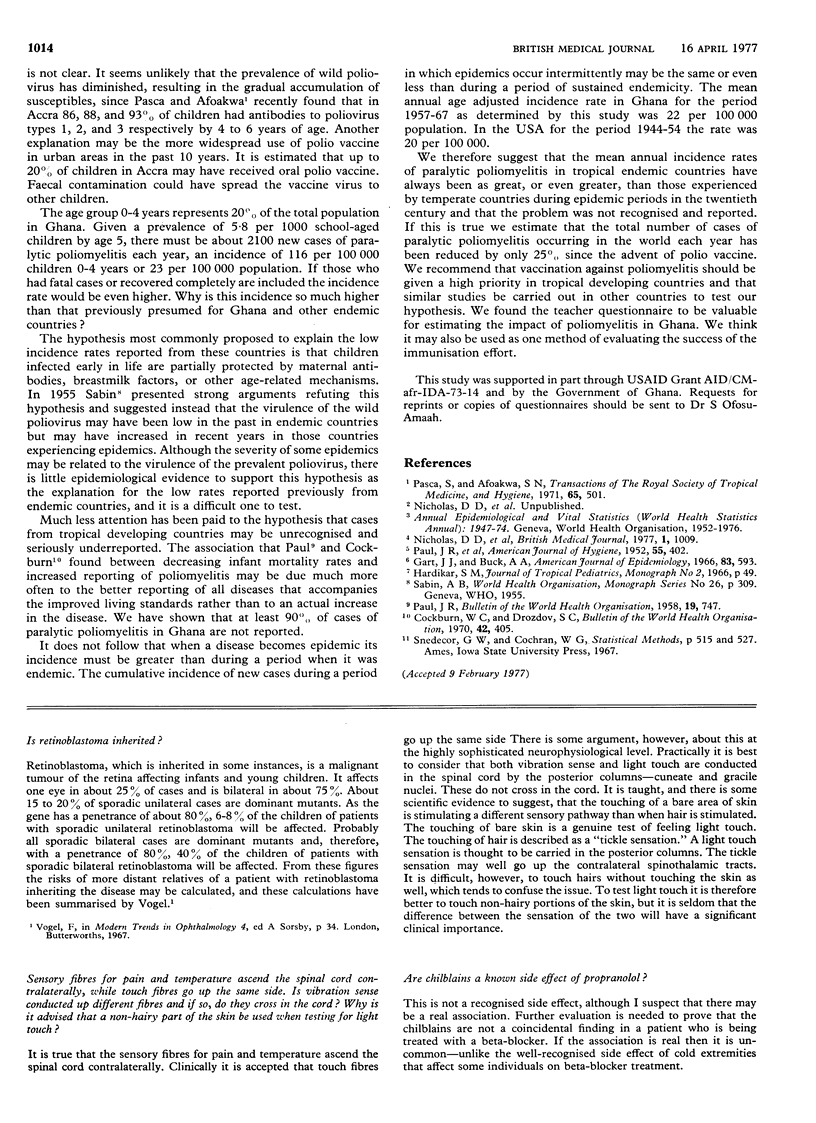Abstract
A postal survey of lameness in schools throughout Ghana showed an estimated prevalence of lameness attributable to poliomyetitis of 5-8 per 1000 school-aged children and an estimated mean annual incidence of paralytic poliomyelitis of 23 per 100 000 population. Official reported incidence rates range from 0-1 to 2-1 per 100 000 population, indicating that at least 90% of cases are not reported. No evidence of epidemics was found to account for these high rates. These suggest that mean annual incidence rates in tropical endemic countries have always been as great, if not greater, than those experienced by temperate countries during epidemic periods in the twentieth century and that the total number of cases of paralytic poliomyelitis occurring in the world each year has been reduced by only 25% since the advent of polio vaccine. Immunisation against poliomyelitis must have a high priority in Ghana and other tropical countries where the disease is endemic.
Full text
PDF


Selected References
These references are in PubMed. This may not be the complete list of references from this article.
- Cockburn W. C., Drozdov S. G. Poliomyelitis in the world. Bull World Health Organ. 1970;42(3):405–417. [PMC free article] [PubMed] [Google Scholar]
- Gart J. J., Buck A. A. Comparison of a screening test and a reference test in epidemiologic studies. II. A probabilistic model for the comparison of diagnostic tests. Am J Epidemiol. 1966 May;83(3):593–602. doi: 10.1093/oxfordjournals.aje.a120610. [DOI] [PubMed] [Google Scholar]


